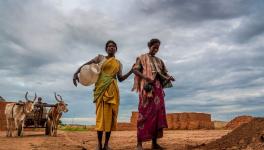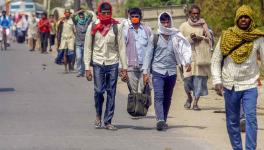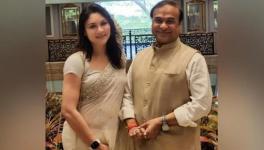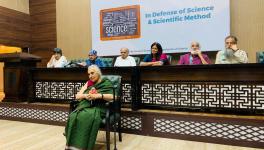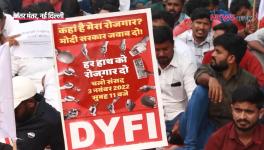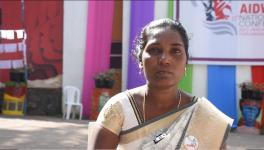Public Display of Faith Can Wait, Humanity Cannot
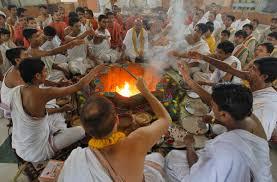
Representational Image Only
India went for the world’s toughest lockdown in March, when just about 500 Covid-19 cases had been reported. And it has started withdrawing the lockdown when India has become the seventh-worst pandemic-affected nation, with over 1.91 lakh infections and close to 5,500 deaths. India is registering giant spikes in active cases of Covid-19, but the home ministry has come out with a phased plan to unlock India. The current phase of re-opening will focus on the economy. It has been decided that malls, hotels, restaurants and places of worship will reopen from 8 June onwards.
Concerns over the economic downturn are understandable. The latest GDP data shows the slowest pace of growth in 11 years in the last quarter of 2019-20, and the economy has been hit hard by the Covid-inspired sudden and complete lockdown. But one fails to understand the decision to open religious places at such an early date.
It remains unanswered whether religious places are being thrown open to pre-empt Mamata Banerjee, the Chief Minister of West Bengal, who has announced that her state would open all places of worship from 1 June. It is also not known whether this is being done, as BS Yediyurappa, the Chief Minister of Karnataka, wrote in his letter to the Prime Minister, because devotees are insisting that religious sites be opened.
The move may be prompted by the steady murmuring in religious establishments that they are supposedly facing a financial crunch. Recent reports citing the Tirupati temple (considered the richest Hindu temple) say that it will retrench employees due to a cash crunch since devotees are not around to offer donations.
Religious places were closed on 25 March, when India imposed a total lockdown to “break the chain” of transmission of the highly-contagious Novel Coronavirus. While temples have remained shut and religious gatherings have been prohibited, there have been incremental relaxations in other areas, such as allowing shops and public transport to reopen.
But while the idea of re-accelerating economic activities is understandable—taking all precautions possible—how advisable it is to allow people to gather at religious sites when the Covid-19 infection rate accelerating? The much-awaited flattening of the curve is yet to be encountered, and reports say that many Indian hospitals are overflowing with Covid-19 patients. Is it then advisable to allow hundreds, thousands, or even scores to get together at religious sites?
It is a marker of the worsening situation in parts of the country that a team comprising 50 doctors and more than 100 nurses from Kerala is arriving in Mumbai to assist the Brihanmumbai Municipal Corporation in its effort to control the pandemic. Two senior doctors from Kerala have already arrived to lead the setting up of a special Covid-19 hospital there.
We know about the pandemic situation in Gujarat, which, along with Maharashtra, happens to be among the worst-affected states. The Gujarat High Court has come down heavily on the state government for completely mismanaging the pandemic.
So while the powers that be may claim that India is on the path to “victory” in the battle against Covid-19, the situation on the ground is not encouraging. Just recently India registered a record single-day spike of 265 deaths and 7,964 new cases, according to the Health Ministry. India has also emerged as a “leader” in the Asia-Pacific region, with 1.91 lakh infections, recently leaving China far behind despite getting enough warnings about the impending pandemic from the very beginning of this year.
It might be argued that a strict code of conduct could be followed at religious places as Banerjee had proposed. Restricting visitors at a time to ten people, making masks and sanitisers compulsory is one thing. The fact is, these restrictions and rules could be practically impossible to execute and monitor.
In neighbouring Pakistan, bowing to pressure from conservatives and the Ulema, President Arif Alvi formulated a 20-point action plan to allow congregations. The dos and don’ts include wearing masks, banning handshakes or hugs and getting worshippers to refrain from touching their faces and so on. But all these special operating procedures (SOPs) remained on paper, perhaps because the law-enforcement agencies had experienced the wrath of the faithful at some places. In Karachi the police were beaten by charged-up mobs when they tried to enforce government orders against allowing congregations. Pictures on social media of packed congregations went viral, with private guards bearing automatic assault rifles protecting some worshippers.
When people across faiths have largely abided by the restrictions imposed by their governments, and obeyed the entreaties of political leaders and religious establishments so far, can they not be persuaded to practice their faith at their homes or private domains for few more weeks? Can it not be argued with those who believe in the omnipresence of god that for the benefit of humanity—for the survival of other “children of god”—they limit their prayers to the private and familial realm and abstain from public displays of faith?
Can the faithful be reminded that a country like the United States of America, which has some of the best doctors and hospitals, has lost more than 1 lakh to this pandemic? The enormity of this number can be gauged from the fact that these casualties are more than the number of Americans who died in the long-drawn war in Vietnam and Korea in the early fifties.
In India, experts are already estimating a spurt in cases in coming months. Dr Randeep Guleria, director, AIIMS, a major voice in India’s anti-Covid strategy, is reported to have said that modelling data and India’s Covid-19 curve make it likely that the pandemic will peak during June and July.
It is important to also bear in mind South Korea’s experience and the role played by a single patient (nicknamed “Patient 31”) in spreading the virus there. In early March, within a couple of weeks, South Korea went from a few Covid-19 cases to thousands and this spread was attributed to a fringe church.
“A single “super-spreader” known as “patient 31”—a member of a fringe church called Shincheonji—is thought to have caused the rapid rise in cases. Now, the Seoul Metropolitan Government has filed a formal complaint against the congregation, accusing it of murder.”
Or consider the ISKCON temple in Bangladesh. The news recently said that 31 devotees of the sect tested positive for Covid-19 at a Bangladesh ashram. Authorities in Bangladesh were baffled, for the ashram had been closed to outsiders since 8 March. Nearer home, much has been written about the Nizamuddin Markaz.
By opening up religious places, all the instructions and admonishments about physical distancing, wearing masks, avoiding shaking hands, hugging or other potentially virus-loaded contact would be thrown to the winds. Merely a fortnight back, when the government allowed alcohol shops to open, all these norms had gone for a toss. India does not have the police and other security forces in adequate numbers to handle the crowds that would throng all religious places in any case.
It is worthwhile to recall that in April and May, from the Vatican to Mecca, from Mumbai to Minneapolis, large and small religious places were closed to the public. Faith and its proponents had finally ceded space to science.
Contrary to popular perception, Muslim-majority countries such as the United Arab Emirates, Saudi Arabia, Iran, Algeria, Tunisia, Jordan, Kuwait, Palestine, Turkey, Syria, Lebanon and Egypt had suspended congregational prayers. And when there was resistance within Pakistan from conservative mullahs, Egypt’s top Sunni Muslim seat of authority, Al-Azhar, had “issued a fatwa” (legal ruling) on the request of President Alvi, permitting suspension of Friday prayers “to control the spread of the deadly coronavirus in the country.”
The fatwa stressed that public gatherings, including congregational prayers, could spread Covid-19 and the governments of Muslim countries had full jurisdiction to cancel such events. It emphasised on amending the azaan to use the words “Salaat Fi Buyut-e-kum”, which means “pray in your homes”, instead of the usual “come to prayer”.
The edict said that it is obligatory for Muslims to abide by the health instructions of the State during the crisis and to avoid unofficial information and rumours. In a very perceptive and thought-provoking article, “Our Debt to Darwin”, Pervez Hoodbhoy, a leading Pakistani physicist and human rights activist, wrote:
“..most educated people are beginning to understand why scientific approaches work and unscientific ones don’t. Better still, even ultra-conservative and science-rejecting world leaders are now begging scientists to speed up the rescue work. For all their talk about faith and calls to bang utensils or clap from balconies, they end up pleading for anti-coronavirus vaccines and drugs. Bluff, bluster and bombast have limits.”
In the grim situation we are passing through it is worthwhile to reiterate such silver linings.
The author is an independent journalist. The views are personal
Get the latest reports & analysis with people's perspective on Protests, movements & deep analytical videos, discussions of the current affairs in your Telegram app. Subscribe to NewsClick's Telegram channel & get Real-Time updates on stories, as they get published on our website.









